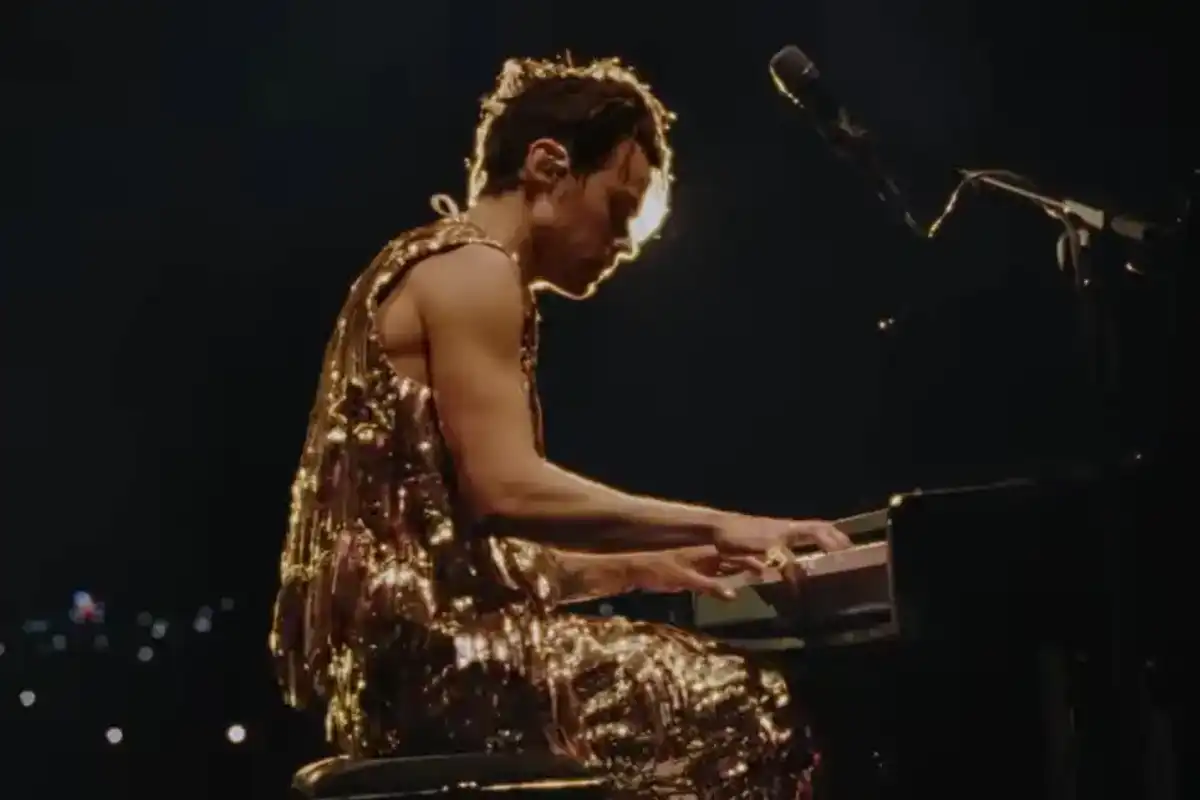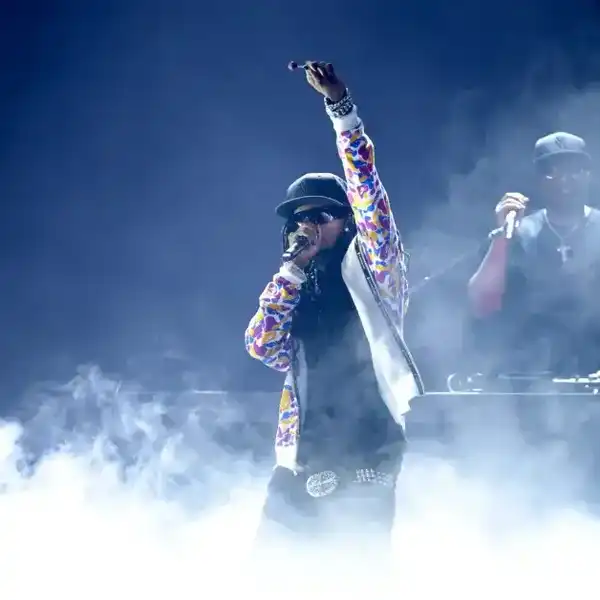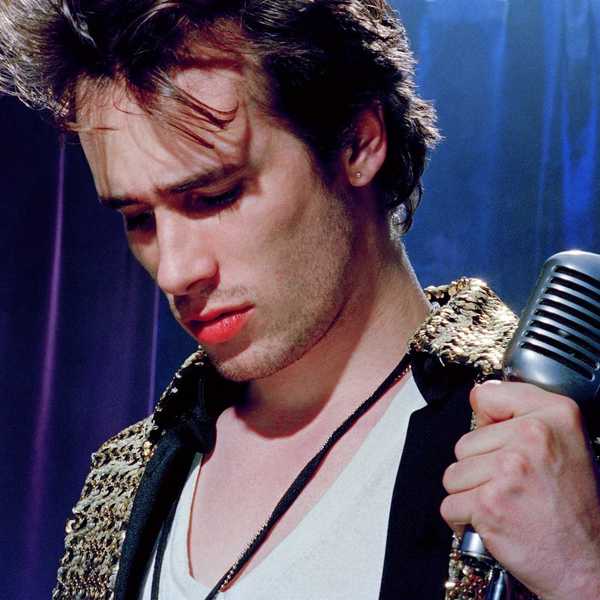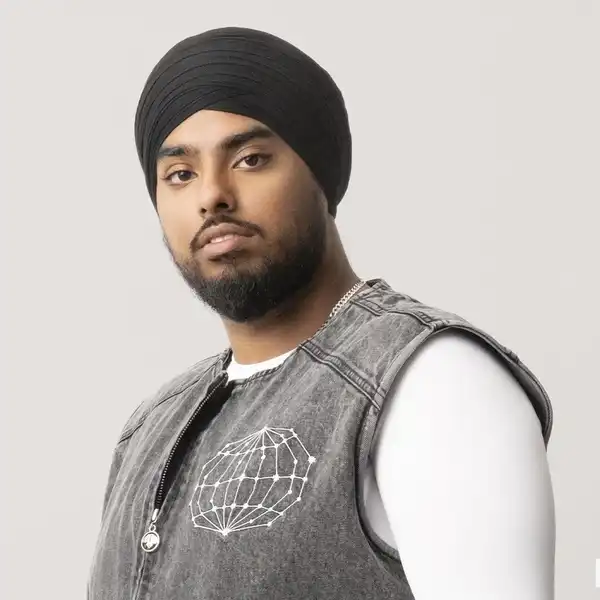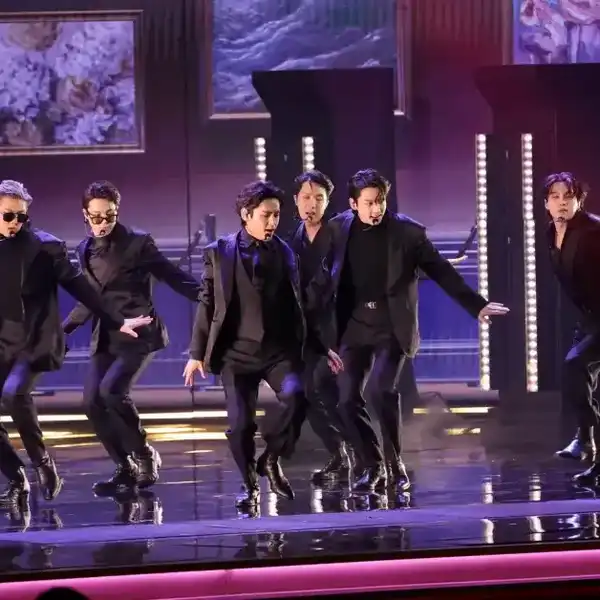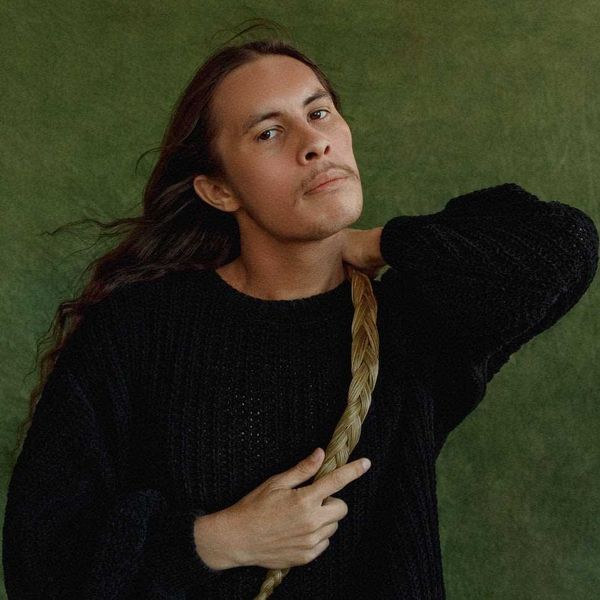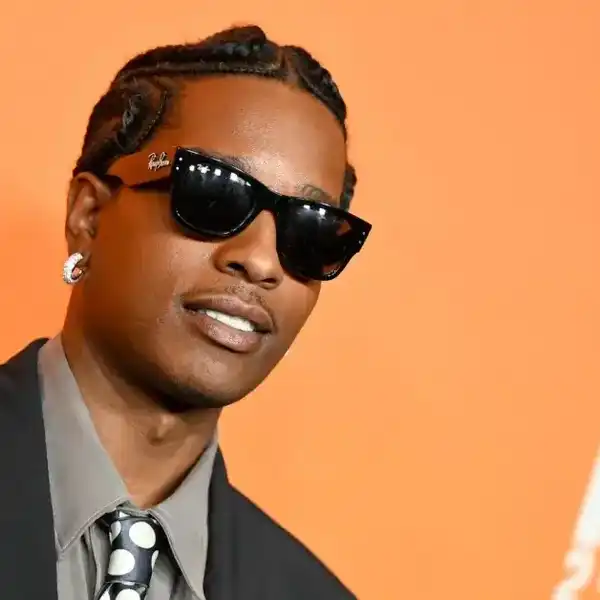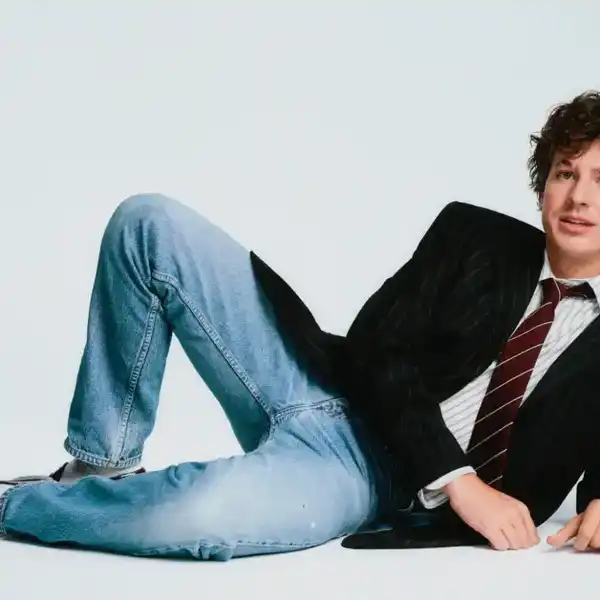Punjabi Wave: How Diasporic Canadian Artists Are Redefining Global Music
Despite diplomatic tensions, these chart-topping artists are blending traditional and contemporary influences to create a border-blurring new sound — and the world is taking notice.

Ikky, Karan Aujla, AP Dhillon, Jonita Gandhi, Gurinder Gill
Punjabi music history is being made in Canada. An innovative new wave of diasporic artists is blurring boundaries between genres and setting chart records. They’re blending traditional and contemporary sounds to create something undeniably their own — and it’s spreading worldwide.
With its massive population and an ultra-profitable film and music industry, India is one of the top entertainment markets in the world. Punjabi music has emerged in its own right, with labels like New York hip-hop legend Nas’s Mass Appeal and Universal Music teaming up to spotlight music in both India and North America. This year, singer/actor Diljit Dosanjh became the first artist to perform at Coachella entirely in Punjabi.
It’s not just an Indian phenomenon, but a Canadian one. Diplomatically, the relationship between the two countries is suddenly volatile, but it hasn’t dulled the power of the music. There are over 2.5 million people of South Asian heritage in Canada, and they account for some of the most popular music on both sides of the world. Three of the top 10 tracks in India in 2022 were made by Canadian artists. On Spotify, the top streamed track of the year was “Excuses” by AP Dhillon, Gurinder Gill and Intense, who broke out from British Columbia. Canada, where artists express freely and blend cultural influences fluidly, is proving to be fertile ground for an international movement of genre-spanning music.
Collectively, artists like AP Dhillon, Gurinder Gill, Karan Aujla, Jonita Gandhi and Ikky continue to amass billions of streams on Spotify and YouTube and perform on the country’s biggest stages. They’ve starred in documentaries, collaborated with hip-hop stars like YG, and turned audiences who might not speak a word of Punjabi into overnight diehards.
But despite all of their measurable success, it’s taken the Canadian music industry a long time to recognize and support the artists who have been proving themselves on their own terms. That’s finally starting to change, even during a challenging time.
Recently, Canadian Prime Minister Justin Trudeau set off a diplomatic crisis when he accused the Indian government of potential involvement in the assassination of Sikh activist and Canadian citizen Hardeep Singh Nijjar. Tensions have been rising between the two countries since then, and artists have simultaneously found themselves facing undue scrutiny. Just weeks ago, Punjabi-Canadian rapper and singer Shubh had his Indian tour cancelled after facing criticism for sharing a piece of art that he says was politically misinterpreted.
“We are trying to make art that helps people on an individual level, regardless of their colour, race, religion, nationality [or] gender,” writes Dhillon in a recent Instagram post after Shubh’s tour was cancelled. “Division has gotten us to this point but unity is the key to the future."
For Punjabi-Canadian artists, this is not a time to shrink away from the spotlight. It’s a time to engage and spread their music around the world. It’s a culmination of years of work that is now coming to fruition in a major way.
A home for Punjabi music in Canada
Karan Aujla and Ikky have some serious bragging rights.
Their addictive summer pop album Making Memories debuted at No. 5 on the Billboard Canadian Albums chart, making it the highest-charting Punjabi album debut in Canadian history. At launch, it sat above Midnights, the newest album from arguably the largest pop star in the world.
“All of my friends were joking around telling me, yo, you passed Taylor Swift!” Aujla tells Billboard Canada. “When we saw these numbers, and we saw that mark, we thought, okay, something is happening here.”
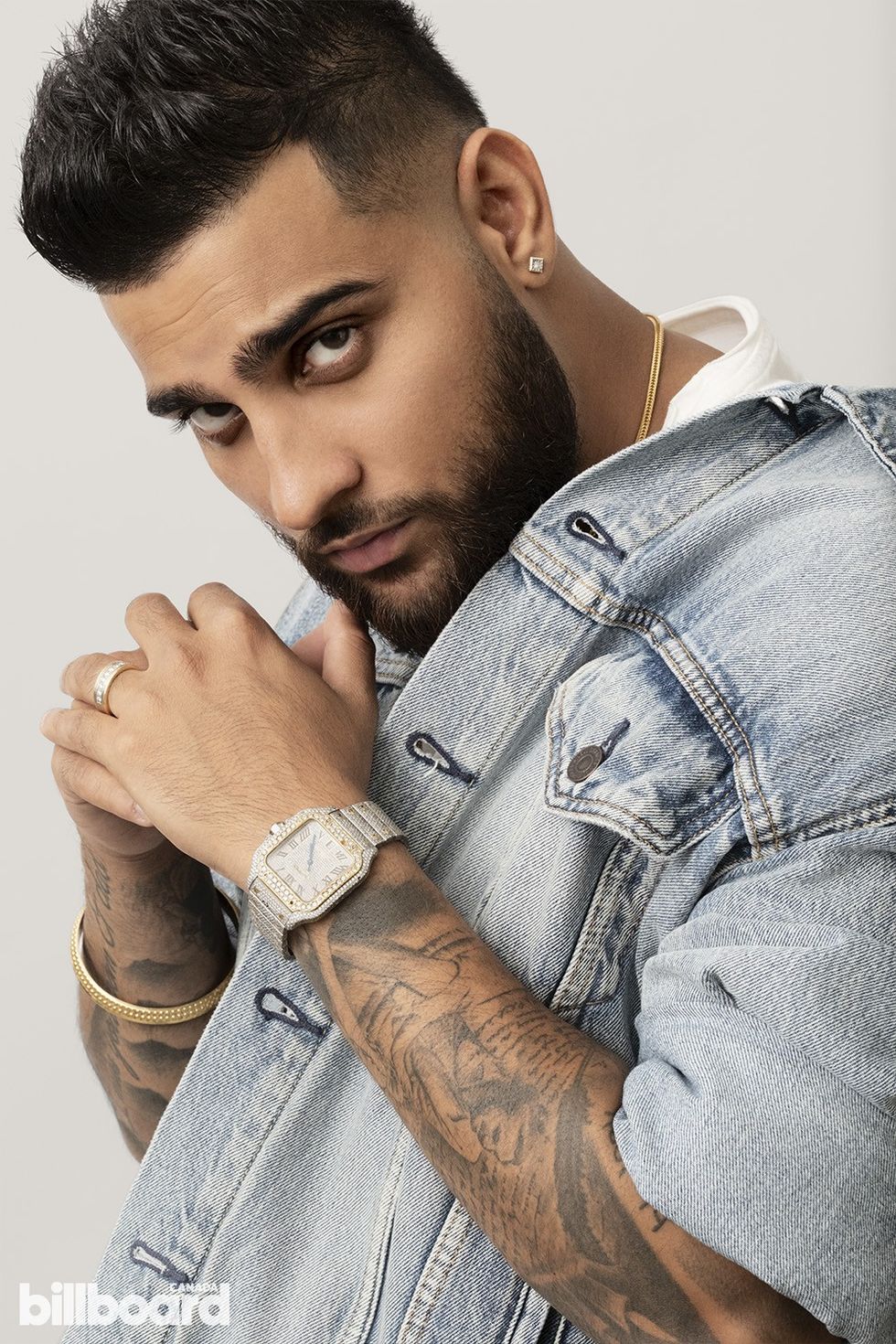
This summer, Warner Music Canada and Warner Music India came together to launch 91 North Records, a new label aimed at supporting South Asian artists across borders. At their industry launch event at their new office in Toronto, Warner Music Canada’s president Kristen Burke called the label a reflection of significant changes in the Canadian music industry.
The rise of music streaming and social media networks like TikTok have built worldwide exposure to music beyond local radio and opened the doors to new and different sounds. There’s been a rise in popularity for artists from all over the world, especially Punjabi music. “This music deserves a platform on the global stage and a dedicated label based in Toronto,” she says.
Ikky, the 22-year-old producer born Ikwinder Singh, is the label’s creative director. Jonita Gandhi is one of his first signings. The artist, who sings in various regional Indian languages including Hindi, Tamil, Telugu and Punjabi, says that she sometimes has a hard time figuring out where she belongs, but feels right at home at 91 North. “I feel like I’m finally being seen,” she remarked at the launch.
Ikky says 91 North gives him a chance to think beyond himself and build a unified front amongst the new Punjabi wave. The goal, he says, is to get Punjabi artists to a point where they can compete on a global level next to the biggest artists in the world. It’s not just global outreach, but major label infrastructure that he says many artists in India desperately need.
Aujla says that’s something he struggled with before he signed with Warner Canada and Warner India. He came to Surrey, British Columbia from the small village of Ghurala in India’s Punjab state when he was 17 and built a career writing for other artists. But he didn’t know how he was supposed to be compensated for it. He’d never heard of SOCAN, for instance, which represents rights holders for music in Canada.
“When I was young, I didn’t know what I was doing. I really needed help,” he says. “I wrote over a hundred songs and didn’t know I was supposed to get royalties. Some people around me took advantage. And that’s still happening in Punjab a lot. It needs to be corrected ASAP.”
Back home, he says, some people actually pay TV stations and record labels to play their music, not vice versa. “They don’t know what’s going on with the business side of music,” he says. “But now they’re starting to know.”
Paving the path
One of the biggest stars of Punjabi music is AP Dhillon, whose mix of trap beats and melodic lyricism has made him a champion of Punjabi culture in both India and North America. AP Dhillon: First of a Kind, a recent Prime Video docu-series about his rapid rise, follows Dhillon, his collaborators Shinda Kahlon and Gurinder Gill, and his small team at Run-Up Records as they embark on their first Canadian tour.
Dhillon’s very first show was at his hometown hockey rink, Vancouver’s nearly 19,000-seat Rogers Arena, and it only went up from there. Though the venues may be large, staying small and independent helps him keep his vision in his own hands, where he collaborates on everything from production to music videos. But it wasn’t a conscious choice. It was a necessity.
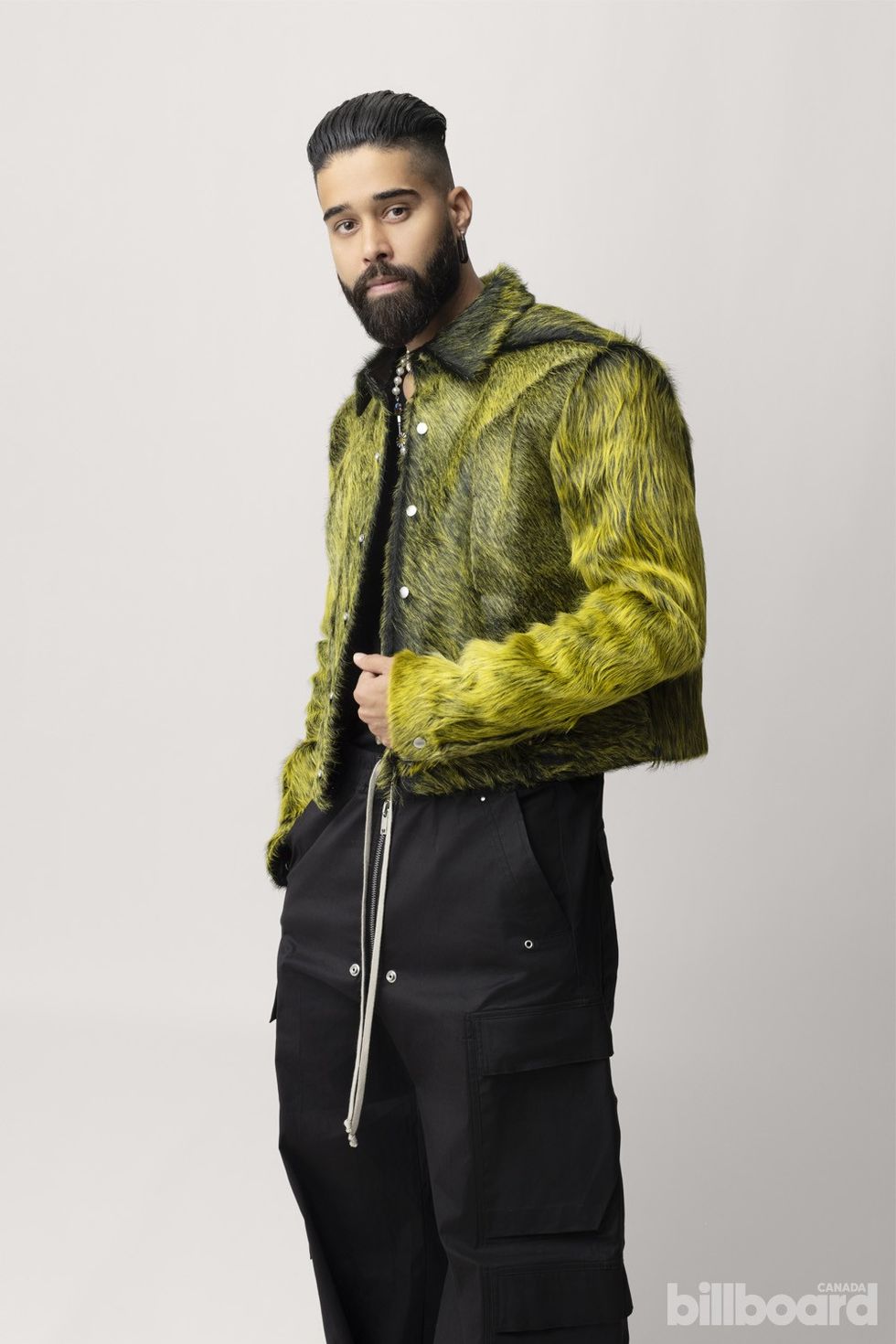
“Early on, I tried to send my music to a few labels, to people in the industry. I tried to message producers,” Dhillon recounts. “It wasn't going anywhere. They weren’t grabbing it. They were like ‘this ain’t it.’ So we just kept going, kept going, kept going, and we didn’t stop.”
Gurinder Gill, his former collaborator who’s now striking out on his own, had never even been to a concert before performing for crowds of more than 10,000.

“The first concert we went to was our own,” he says. “One day you’re living your daily life and then, boom, next thing you know you’re on stage with this many people cheering on your music, cheering your name. It’s just a blessing.”
For major concert promoters, the numbers are becoming too big to ignore. Baldeep Randhawa is a talent buyer at Live Nation, and he says the company has big plans for Punjabi artists in Canada, the United States and the U.K. “We're all collectively working on this on a global scale to really put some fuel on this fire,” he says from his office in Vancouver.
Used to seeing major Punjabi acts play in banquet halls and wedding venues, his initial goal was to break barriers and get them into “proper venues” of 500 capacity or more. The growth has been so rapid, however, that the company now has their sights set much higher: stadiums. That’s an achievable goal for artists like Dhillon and Diljit Dosanjh, who have already easily sold out arenas in cities like Toronto and Vancouver. But the strategy also includes breaking up-and-coming acts, like Calgary-based Prabh, who already have tens of millions of streams. Often, that means giving them the support they never had access to, which sometimes includes PR, management, even advice on merchandise.
That’s something new for many Punjabi artists, who are able to get huge numbers quickly without the tools to properly capitalize. For Gill, before coming to Canada as a student in 2015, he didn’t seriously consider pursuing music as a career. Though he’d perform at local singing competitions in Punjab, it wasn’t until he found a small community of friends who shared his passion for music that he realized music could be something bigger.
"We were not financially stable [at first], and we were finishing school,” he says. “It was a lot of work when we started taking it seriously. We had to do everything by ourselves.”
Now, his tracks have cumulatively garnered billions of streams worldwide. His debut solo album, Hard Choices, which dropped this summer on Run-Up Records, showcases his lyrical prowess, blending Punjabi imagery, melodies and confident wordplay over steady hip-hop and trap beats. It represents a willingness to innovate, which is something he and his peers all share.
“We always try to do something new, something that hasn’t been done before,” he says. “That’s why the songs we release are a different sound for our industry or for the mainstream.”
A sound that crosses borders
The new sound of Punjabi music reflects a sensibility more than a genre. Combining classical folk stylings with elements of hip-hop, R&B and electronic music, it’s music that refuses to be limited.
Bhangra, an upbeat folk dance and music native to Punjab that originally celebrated the harvest season, is known for its accompaniment with live instruments like the dhol drum. Noticing a lack of heavy bass, artists in the 1980s and 90s began merging it with funk, reggae, dub and garage music that punctuated British soundwaves. In the process, artists have created points of connection for youth who may otherwise have been alienated from their language, art and culture — which is increasingly challenging to preserve with generations of migration.
Following this tradition, Punjabi-Canadian artists have put themselves on the map by creating music reflective of their specific worlds of influence. That’s especially true in multicultural cities like Toronto, where diverse sounds flow organically.
Gandhi, who has fielded questions about sounding “too Indian” or “too Western” throughout her career, says she now appreciates the blend of global influences that defined her early life in the Greater Toronto Area city of Brampton. “Being exposed to so many different cultures and people from around the world in my school opened up my mind to a lot of music that I might not have come across if I grew up somewhere else,” she says.
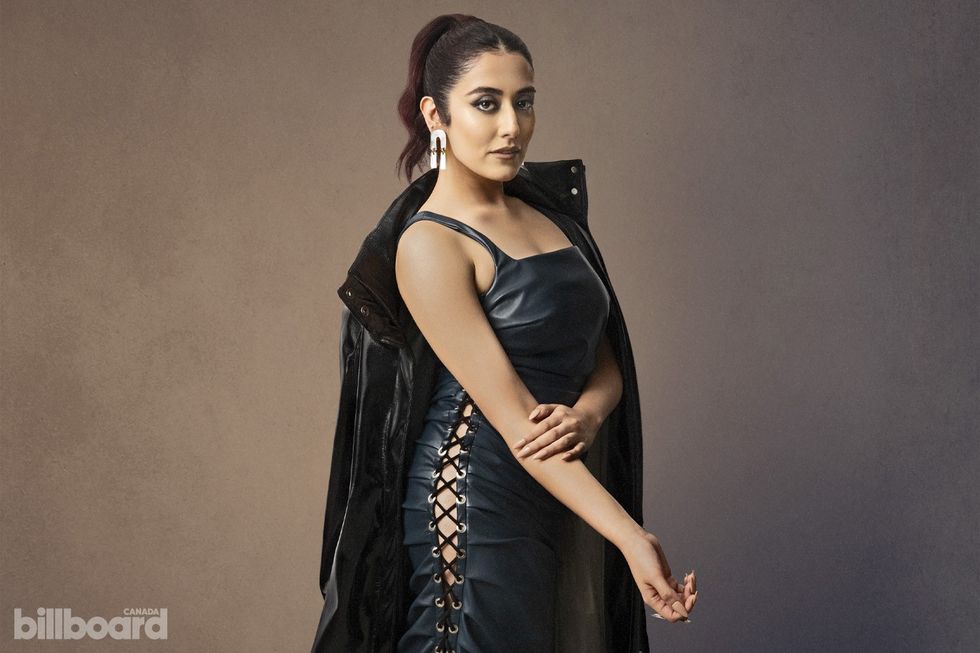
Ikky, who was born in the suburb of Rexdale and now lives in Brampton too, says his music is also inextricable from his upbringing. The essence of his Punjabi heritage is in everything he makes, but so are reggae and dancehall, hip-hop and R&B, because those were the influences he was growing up around. “Our diversity is crazy in Toronto,” he says, “enough for you to be adding these cultures in your music without you ever knowing it.”
Ikky pushed Aujla to expand his sound while recording Making Memories in Toronto. None of his collaborators spoke Punjabi, but they built a shared musical language in the studio while jamming and trading records. Ikky curated an inspo playlist on Spotify ranging from hip-hop (Drake, J. Cole, Mobb Deep, 50 Cent, DJ Khaled) to R&B (Aaliyah, Ashanti, Keyshia Cole) to reggae (Wayne Wonder) to Punjabi-Canadian forebears (Jazzy B). You can hear it all in the smooth, effortless vibes of the music.
Aujla prides himself on being a writer first, but he’s proud of the cross-cultural audience his music is reaching. He’s a big fan of Bad Bunny, and he’s been obsessively listening to the Puerto Rican artist recently, trying to figure out how his specific melodies feel so universal despite the language barrier. Latin artists are dominating charts in and out of Latin America, and that inescapable global power is within reach for Punjabi artists.
“It’s just that one thing that we need to get right and what’s happened with Spanish music could happen to Punjabi music,” Aujla says. “We're working day and night to get that right sound, that right melody that will just go everywhere in the world.”
The world watches
Meanwhile, they’re still fighting for recognition at home.
At this year’s Juno Awards, Dhillon did something that’s never been done before. Donning a dapper white tux, he crooned his recent single “Summer High,” giving the first ever Punjabi performance at Canada’s biggest music gala. It was a big breakthrough moment of recognition from the industry, but Dhillon said he fought to make sure it wouldn’t be a novelty or a one-off.
AP Dhillon performs 'Summer High' | 2023 Juno Awards
“I had a thorough talk with them before performing. I said ‘I’m honoured to do it. But there’s one condition: you gotta put my people on.’” he recalls. “It’s not a one-time thing that helps sell tickets for the Junos and then call it a day. Punjabi music will be there forever.”
Musicians are seeing the shift, and not just in the places you might expect.
This summer, Ikky was booked at the Calgary Stampede, an annual festival best known for rodeo exhibitions and cowboy boots. Ikky, who is Sikh, heeded warnings that people in Alberta tend to experience racism more acutely than in Ontario. Knowing he would be the first Punjabi artist to perform there, he arrived ready to DJ country songs. But his plans quickly changed.
“I intended to go there and play Morgan Wallen. That is what I really thought I was gonna go do,” he laughs. “As soon as I saw the mixture of people there, I was like, no, we gotta go completely Punjabi. We gotta give them what defines Punjabi music.”
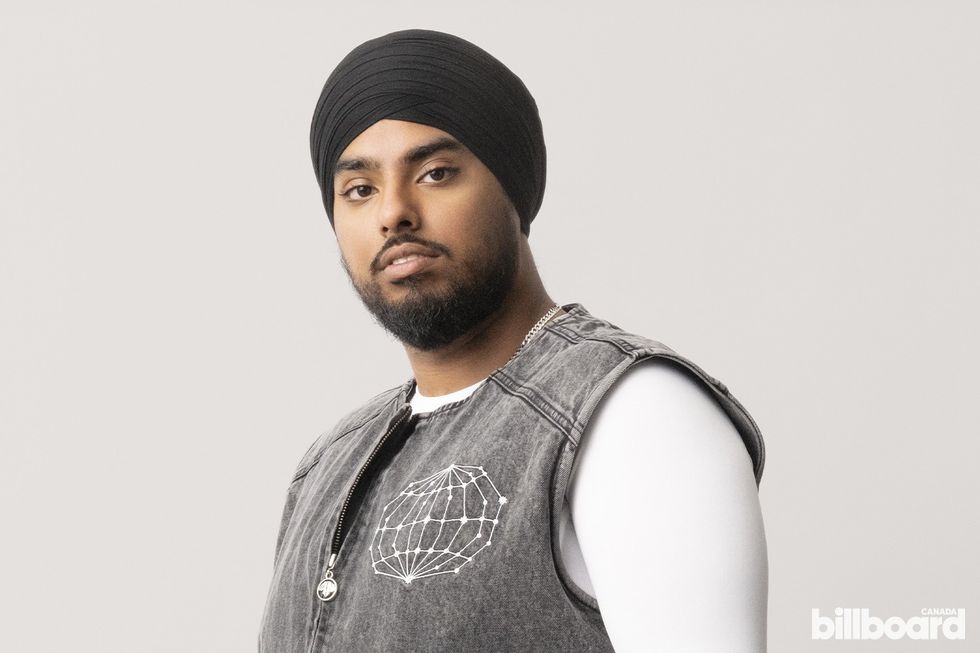
By the end of the set, people had come from rides and from queues to hear the music that was coming from that street stage, and by the end the crowd grew to about a thousand people. “That's that moment where I thought, okay, what you’re doing is right. Keep your foot on the gas.”
That’s still the case, even as artists like Shubh (who Ikky collaborated with on last year’s “Baller”) face obstacles to free expression and risk misinterpretation for things they do or don’t say. In a way, it shows how much their music is resonating.
“It scares us a little, but at the same time it shows our power,” Ikky says. “As artists, we have a big enough voice to shake a country.”
There have been teases of this kind of mainstream crossover before, from “Beware of the Boys,” the Bhangra/hip-hop collaboration of Panjabi MC and Jay-Z in the early 2000s, to the “international” version of Shania Twain’s 2002 mega-seller Up!Up!, but while those fusions have been taken as short-term novelties, the new wave of Punjabi artists are building a foundation to make it endure.
Brampton-based rapper Sidhu Moose Wala was a major figure in opening the door to the mainstream for Punjabi musicians. Tragically murdered in India in 2022, the same year his album Moosetape became the then-highest charting Punjabi album in Canada, he is unable to see the success of this new wave, many of whom collaborated or took inspiration from him. That’s why these artists stress the importance of banding together to uplift each other, paving the path for the next generation.
AP Dhillon says he’s seeing the industry change rapidly. When he started to blow up, the labels weren’t really seeing what he and his peers were doing. Today, like billions of people on YouTube and at sold-out arenas, they have their eyes on what’s happening here.
“A few years ago, nobody was paying attention,” he says. “Now, they’re paying attention.”
This article is part of Billboard Canada's digital cover story on Punjabi-Canadian artists. Head here for interviews with every artist featured.
- Toronto Music Experience Hosts Concert at TD Music Hall | Billboard Canada ›
- Diljit Dosanjh Announces 2024 Vancouver Stadium Show | Billboard Canada ›
- Karan Aujla Kicked Off His First Canadian Tour At a Packed Scotiabank Arena in Toronto: Videos and Setlist | Billboard Canada ›
- Karan Aujla a donné le coup d'envoi de sa première tournée canadienne à Toronto dans un Scotiabank Arena bondée | Billboard Canada ›
- Gurinder Gill Steps Back Into the Spotlight | Billboard Canada ›
- Gurinder Gill revient sous les projecteurs | Billboard Canada ›

